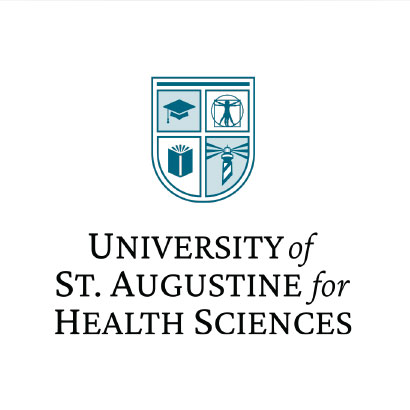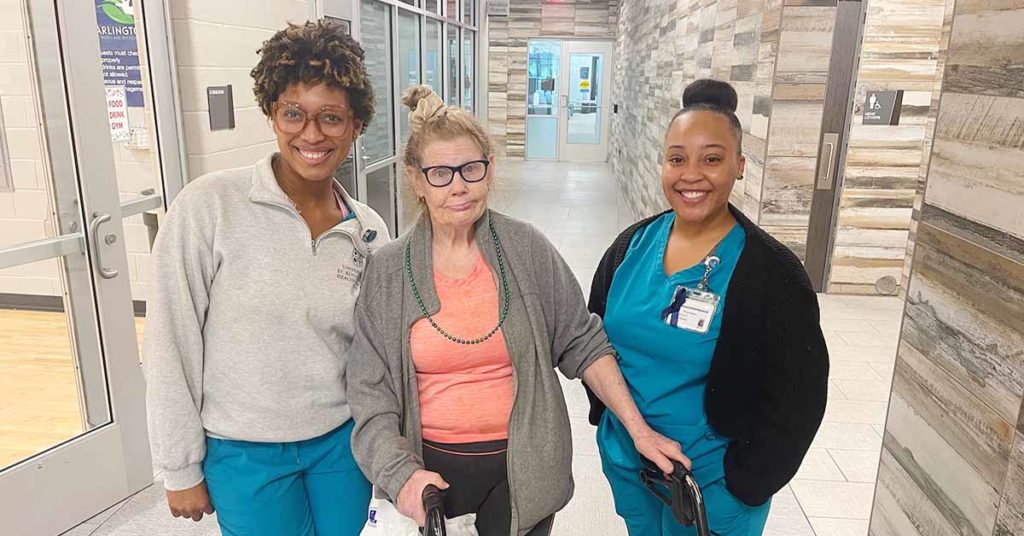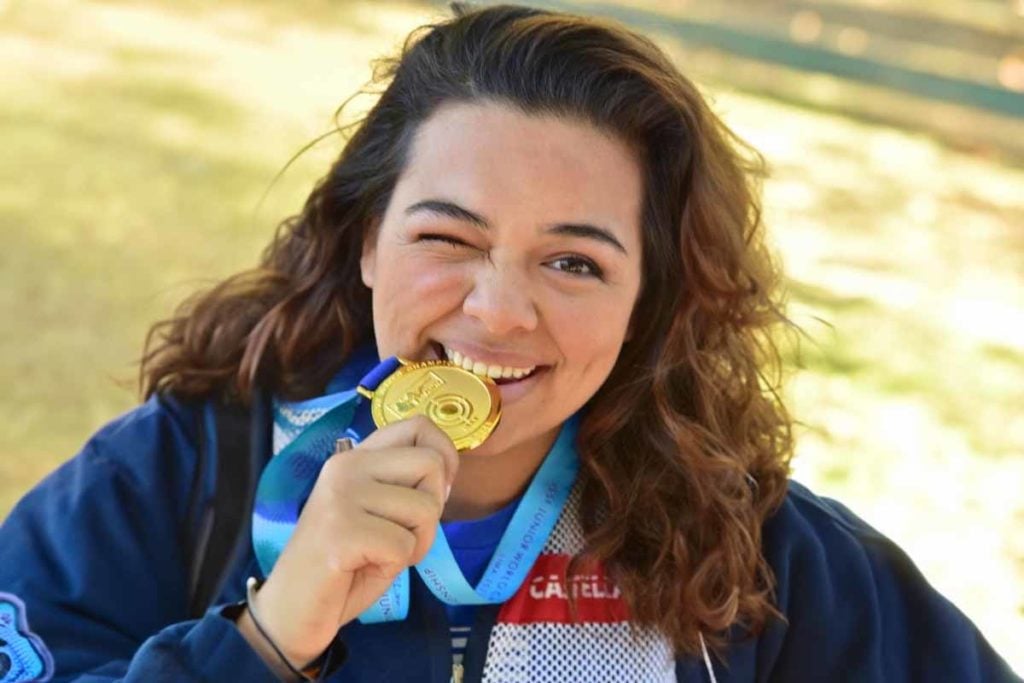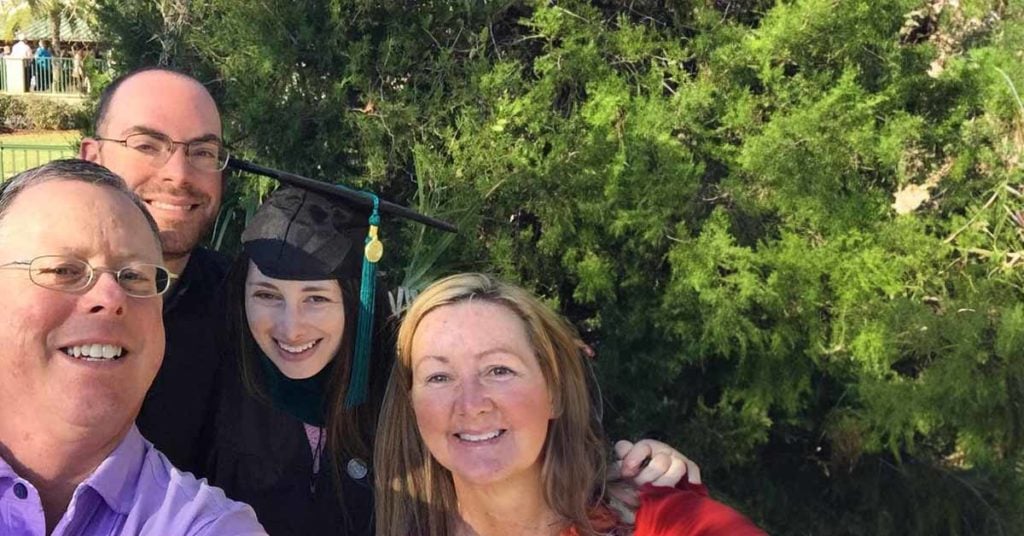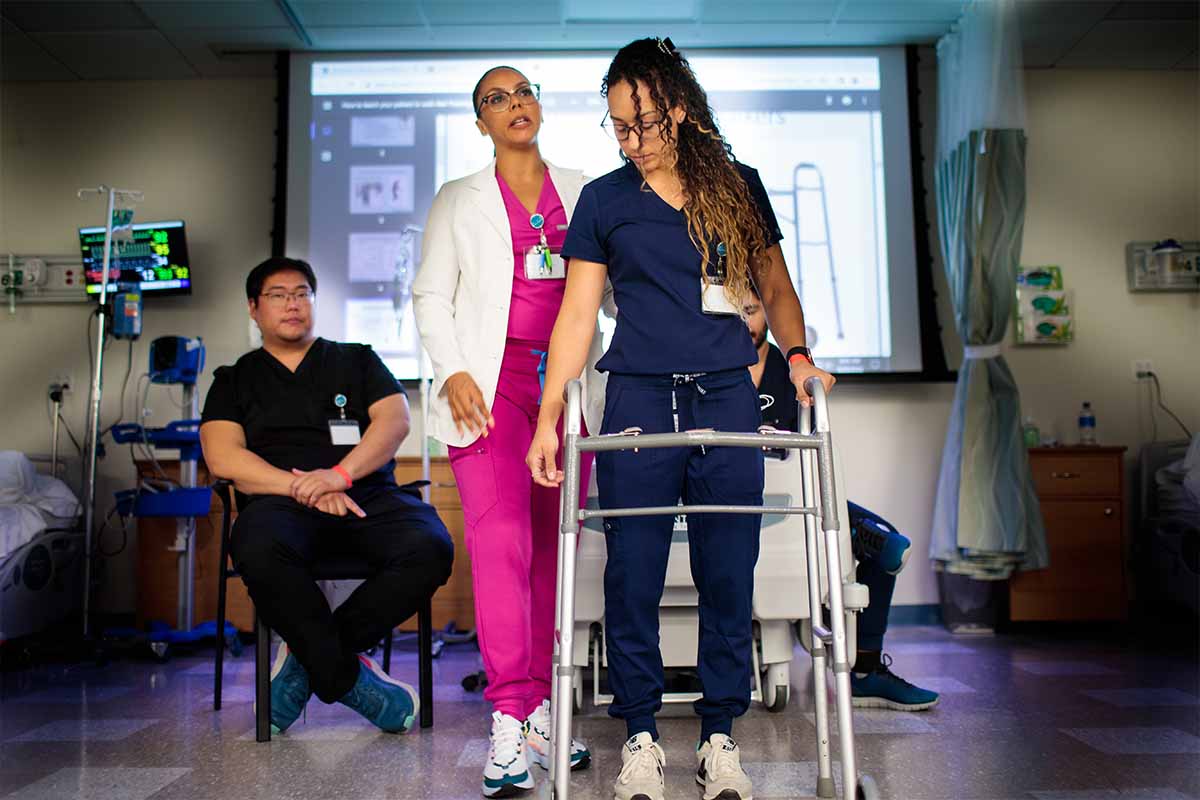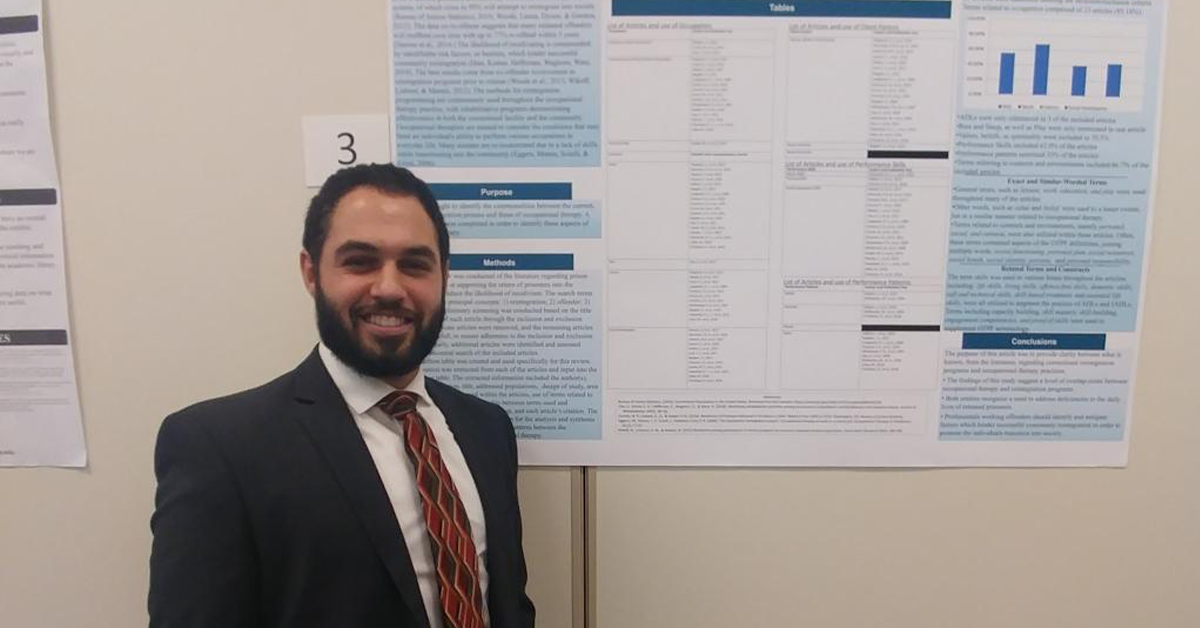

When it was time for USAHS Doctor of Occupational Therapy (OTD) student Nadim Batshon to explore a topic for his capstone project, he started thinking outside the box. He was interested in where occupational therapists (OTs) work in settings beyond schools and clinics—and the different populations they work with.
Batshon had volunteered at a community center that served, among others, people who were formerly incarcerated. So, he had some familiarity with the experiences and needs of this population—and with the challenges they face in re-entering society. “It’s an overlooked population,” he says. “Ex-prisoners face stigma and animosity. But they are human beings like everyone else.”
Studying How to Reduce Recidivism
“People released from prison have a high rate of recidivism,” he says. “Up to 77 percent re-offend within five years. But when ex-offenders are involved in reintegration programs, that rate goes down significantly.”[1] These reintegration programs, which are run by governments or nonprofits, help former prisoners learn strategies to live successfully as peaceful, productive members of society.
“Some occupational therapists work in this capacity,” Batshon says. “But more commonly, it’s people with other training,” such as social workers and counselors. However, his findings suggest that there is an opportunity for more OTs to enter this setting.
“My goal was to identify commonalities between the interventions used in these programs and OT interventions,” he explains. In a scoping review, Batshon looked at U.S. and international studies about reintegration programs that describe their interventions in detail. Of the 27 programs qualifying for his study, he found that 85% used strategies that overlap with OT interventions. The studies often used terms that are similar but not the same as OT terms, such as “living skills” or “essential life skills”, instead of “activities of daily living,” so he had to translate.
Reintegration Strategies That Overlap with OT
Batshon organized the studies according to which types of OT interventions they map to. He found that many programs focused on what the OT profession calls “instrumental activities of daily living (IADLs),” or skills related to living independently after incarceration. The programs also used social and mental health interventions. Batshon described the following strategies:
- IADLs: Therapists help former prisoners learn life skills such as opening a bank account, managing their finances, updating their driver’s licenses, and finding an apartment.
- Work: Formerly incarcerated people face many stigmas and barriers, especially with work. Therapists can help them learn job-finding skills, increase their tech literacy, and think creatively about their career goals. “If they were doing time for theft, they might not qualify to work in retail,” Batshon says. “What are they good at? Could they be a great tattoo artist? We can find their talents and apply it to a job.”
- Mental health: It can be a major adjustment process for a prisoner to go from such a structured system to having so much autonomy. Therapists use a cognitive/behavioral approach to help clients grow their self-esteem and keep a positive mindset.
- Social interaction/participation: Therapists can work with clients to develop better interpersonal communication skills. For example, they may use games that encourage cross-communication in group settings, such as a card game that prompts conversation on various topics.
- Leisure time: It’s important for ex-offenders to detach from friends who could be a bad influence, such as gang members. Therapists encourage their clients to make new friends whom they can play sports with or engage in other wholesome activities. They can help clients find leisure activities that are meaningful and important to them, such as taking a cooking class or making music or art.
Batshon worked with USAHS faculty advisors Becki Cohill, OTD, OTR/L, and Susan MacDermott, OTD, OTR/L. He says his advisors gave his class a good balance of autonomy and guidance. “They allowed us to take the reins and steer,” he says, “but they were always available for questions.” Batshon also had a mentor outside the University, an OT who has worked in the criminal justice system.
Dr. MacDermott says, “Since correctional settings are an emerging practice area for occupational therapy, there is not as much literature on OT’s role within those settings. Therefore, Nadim’s research was able to reveal the potential role for occupational therapy in correctional facilities. This research can be used as evidence to advocate for OT’s enhanced presence in re-integration programming across correctional settings.”
At the conclusion of the OTD program, Batshon’s cohort published their capstone projects as poster presentations. Some of his classmates also researched out-of-the-box OT careers, such as OTs working with survivors of human trafficking and with women who are experiencing post-partum depression. “It was great to hear about other non-traditional applications of OT,” he says.
Batshon says his study “can enlighten OTs about the option of working in reintegration programs.” It can also educate the directors of reintegration programs to “hire OTs to work with clients—or hire OTs as consultants to help improve the programs.”
Batshon and his wife live in Temecula, California. The couple just welcomed their first child, a daughter. As of this writing, he was studying for his OT licensure exam. In the future, he wants to work in an adult neurological setting, such as a hospital or specialty clinic.
He says he enjoyed the interprofessional aspect of the USAHS education. “It was great to see different perspectives and gain a better understanding of what other therapists do.”
When asked why he chose USAHS’s OTD program, Batshon says, “I was thinking about the future. I want to open my own clinic someday. The OTD has more options, and the additional schooling will help down the road.”
[1] Nadim Batshon, Becki Cohill, and Susan MacDermott, “Elements of Occupational Therapy in the Criminal Reintegration Process,” Dec. 2019.
The University of St. Augustine for Health Sciences (USAHS) offers hands-on Master of Occupational Therapy (MOT) and Doctor of Occupational Therapy (OTD) degrees. Practice with mock patients in our state-of-the-art simulation centers and learn anatomy with our high-tech tools. Prepare for clinical practice with patients across the lifespan, as well as advanced roles in research, practice leadership, and policymaking. Residential and Flex (online/weekend) paths are available. We also offer an online Post-Professional Doctor of Occupational Therapy (PPOTD) program designed for working clinicians and healthcare educators, with optional on-campus immersions and an annual interprofessional trip abroad.
